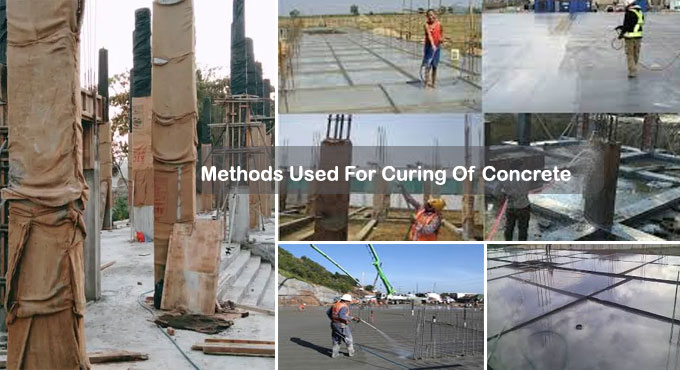NEWS | SOFTWARE | SHEET
Methods of Curing Concrete Structures as well as their Differences
Curing of concrete is amongst the essential considerations in concrete construction since it is associated to properties like permeability, durability, characteristic strength, and so forth.
Furthermore, it is essential to carry out the curing on time as well as an adequate duration of curing is essential to accomplish the accurate characteristics of concrete.
Curing of concrete is carried out to avert the evaporation of the water out of the concrete once it is becoming hardened as well as preserving the moisture within the concrete surface with regard to hydration reactions.
Techniques of Curing Concrete
Water Curing: The utilization of the water is conducted to prevent the drying of the concrete surface. Generally, that technique is applicable once the concrete becomes thinner.
By way of illustration, in construction of buildings, the curing of the floor slab can be conducted through that technique.
Wet Covering: Wet curing is a technique of preserving the surface moisture level through putting materials such as hessian. Utilization of gunnery bae is even usual.
Those covering must set on the concrete surface once it hardens adequately in order to function to please covers. Furthermore, the drying of the concrete surface must not be permitted because of a point.
Formwork Curing: Formwork is the highly efficient curing agent in the construction. Particularly in thick concretes wherein the hydration temperature is excessive, that technique is utilized.
Furthermore, not cost included like the cost is just included within the formwork. Moreover, the single concern is keeping the formwork a little long in comparison to typical.
Membrane Curing: One membrane is formed on the concrete surface to prevent the evaporation of the moisture in the concrete.
Moreover, liquid form material is sprinkled over the concrete surface as well as it hardens as well as creates a membrane. Those materials can utilize with brushed or roller. There’re 2 sorts of membranes: Oil-based, Water-based.
Sheet Curing: There’re 2 sorts of the sheet utilized for curing -
- Lastic Sheet
- Curing Blankets
- Polythene Sheet
Both the sort of the sheet is utilized to cure the plain surfaces generally. Polythene sheets are utilized to cover the concrete slabs as well as columns. Furthermore, the sheet can be put on the slab simply once it gets hardened.
Curing through Absorbing Heat - Pipe Water Cooling: Pipes are set within the concrete in order to absorb the heat. Moreover, water is spread in the concrete as well as it absorbs the heat of within the concrete.
Particularly for thick concrete and once a higher grade of concrete is utilized with regard to construction, that technique is quite appropriate. It decreases the core temperature.
Though, those techniques must be utilized with great care since the abrupt change in the temperature might lead to cracking within the concrete.
Hot mixing Technique: A rise in the temperature of the concrete is carried out to increase the strength of the concrete.
Increasing the temperature of the concrete up to 320C might increase the strength by ten to twenty percent.
There’re various techniques that can be utilized to enhance the temperature of the concrete -
- Enhance the temperature of aggregate through heating
- Heat the water.
- Bring steam within the concrete mix
To get more details, go through the following video tutorial.
Lecturer: Civil Mentors
Download Curing of Concrete: A Technical Study To Increase Rate Of Curing In PDF


